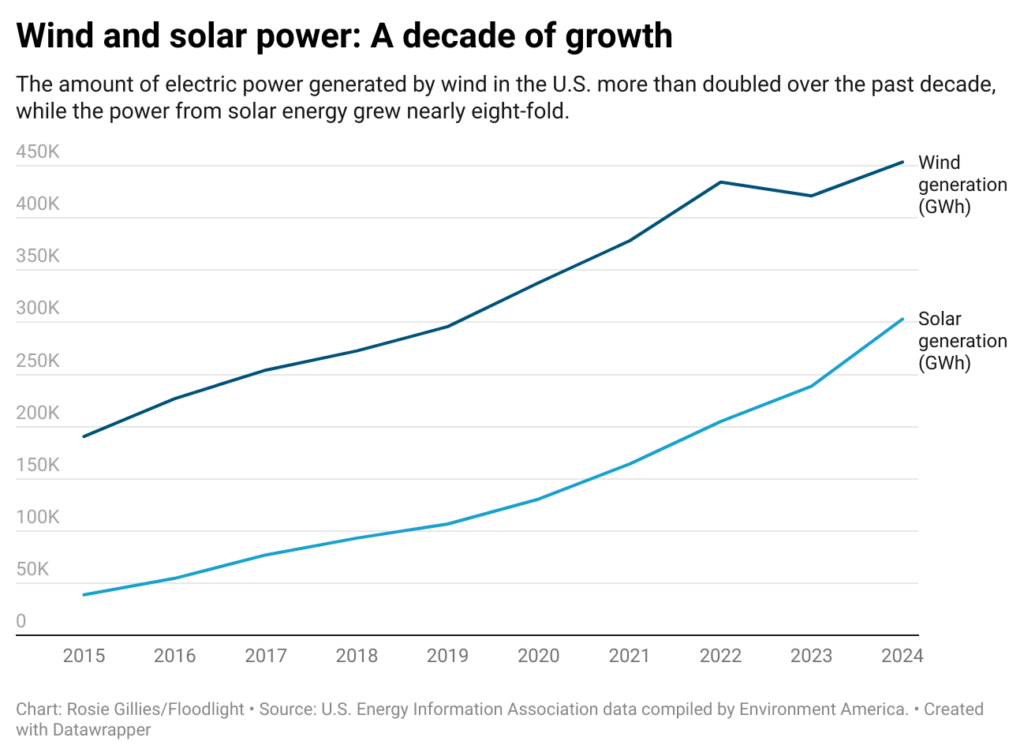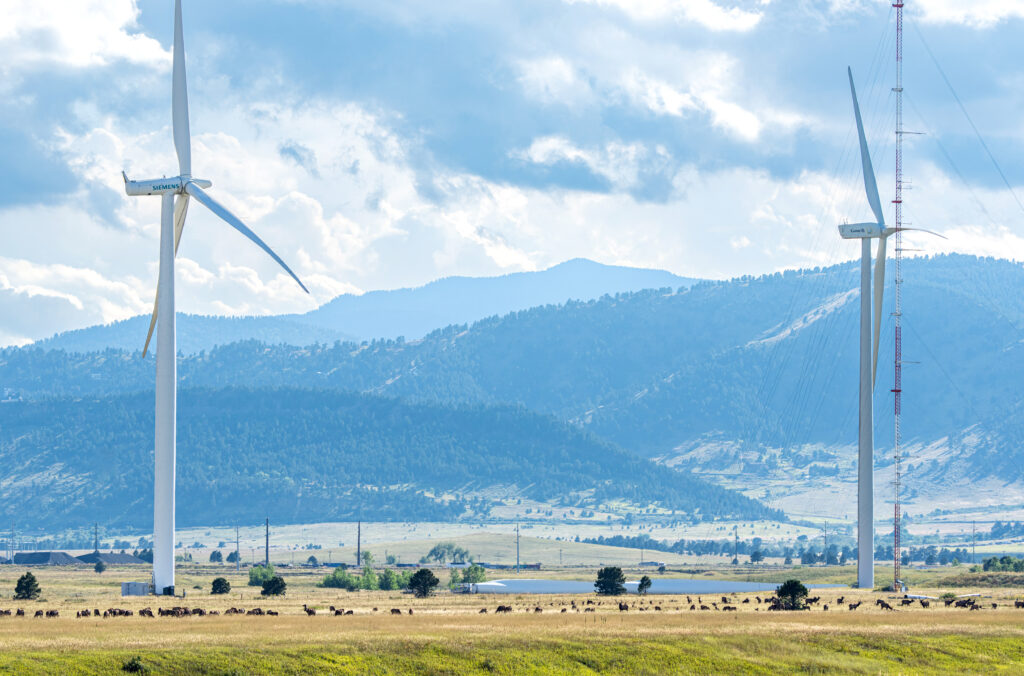This story was originally published by Floodlight.
By Ames Alexander, Floodlight
Renewable energy in the United States has surged to unprecedented levels, with the combined power generated by solar, wind and geothermal more than tripling over the past decade, according to a new report by a network of state environmental groups.

The growth has slashed harmful greenhouse gas emissions, made the nation’s energy system more resilient and prevented thousands of premature deaths from power plant pollution, according to the report by Environment America.
But this progress faces increasing resistance as President Donald Trump in his first 15 weeks in office has begun to dismantle federal policies and spending aimed at slowing climate change.
It’s all happening at a time of heightened concern among environmentalists. Despite an international accord to lower greenhouse gas emissions, the atmosphere now contains record levels of heat-trapping gasses. All 50 states have warmed since the first Earth Day in 1970, according to a new analysis by Climate Central, an independent nonprofit group that researches and disseminates information about climate change and its effects.
Among the highlights of the Environment America report:
- The amount of solar energy produced in 2024 — enough to power 28 million homes — was nearly eight times higher than a decade earlier. Solar power production increased 27% from 2023 to 2024.
- Wind produced even more energy — enough to power 42 million homes in 2024. The amount of power from wind has more than doubled over the past decade.
- Wind, solar and geothermal energy accounted for 19% of all retail sales of electricity last year, according to the federal data used to produce the report.
- The amount of utility-scale battery storage in the United States grew 63% from 2023 to 2024 — and a more than 80-fold increase over the past decade.
- Nearly 3.3 million electric vehicles were on U.S. roads at the end of 2023 – a 25-fold increase from 2014. The number of electric vehicle charging ports, meanwhile, grew to more than 218,000 at the end of 2024 – six times more than 2015 and a 24% increase from just the year before.

More than 1.5 million plug-in electric vehicles were sold in 2024, an increase of more than 7% over the previous year, according to Argonne National Laboratory. Nearly 300,000 new electric vehicles were sold in the United States during the first quarter of 2025 — an 11% increase over the same period last year, Kelley Blue Book data shows.
“The growth of these clean energy technologies is now clearly benefiting people in all 50 states, and they’re really providing the building blocks of a clean energy system free from dirty and inefficient fuels,” said Johanna Neumann, senior director of the Campaign for 100% Renewable Energy, which is led by Environment America. “And the more that we can accelerate the progress that we’ve seen, the better it’ll be for our health and for our environment.”
Most of the states that have seen the biggest percentage increases in wind, solar and geothermal energy over the past decade are in the South — and most are Republican states, according to a Floodlight analysis of the federal data used in the Environment America report.
Some of those states, including Mississippi and Alabama, still rank low in the total amount of renewable energy produced. But other right-leaning Southern states, including Florida and North Carolina, now rank above most others in terms of the total renewable energy generated.
Billions in clean-energy projects canceled
For those concerned about climate change, however, a new analysis points to a more worrisome sign: Almost $8 billion in investments — including 16 large-scale factories and other projects — were canceled, closed or downsized in the first three months of 2025, according to the report by E2, a nonpartisan group of business leaders who advocate for sound environmental policies.

Likely contributing to the cancellations: market uncertainty and the debate in Congress over repealing tax credits and other incentives for clean energy projects. The $7.9 billion in investments withdrawn this year are more than three times the amount canceled over the previous two years, the E2 report notes.
“Clean energy companies still want to invest in America, but uncertainty over Trump administration policies and the future of critical clean energy tax credits are taking a clear toll,” E2 spokesman Michael Timberlake said in a statement.
The Inflation Reduction Act, President Joe Biden’s massive climate law, extended renewable energy tax credits until at least 2032. Whether the Republican-controlled Congress will eliminate those tax credits is unclear.
“I think that market certainty has been stripped away for many of these technologies right now, and they’re feeling uneasy,” Neumann said. “And so it’s not surprising to me that we’re seeing a retraction in investment.”
Floodlight is a nonprofit newsroom that investigates the powers stalling climate action. Banner photo: Staff from the National Renewable Energy Laboratory and GRID Alternatives Colorado install rooftop solar panels during a 2023 volunteer event with GRID Alternatives Colorado. The 6.7-kilowatt solar installation project should provide the home with $1,200 annual savings over the next 20 years. (Joe DelNero/National Renewable Energy Laboratory).
Sign up for The Invading Sea newsletter by visiting here. To support The Invading Sea, click here to make a donation. If you are interested in submitting an opinion piece to The Invading Sea, email Editor Nathan Crabbe at nc*****@*au.edu.



